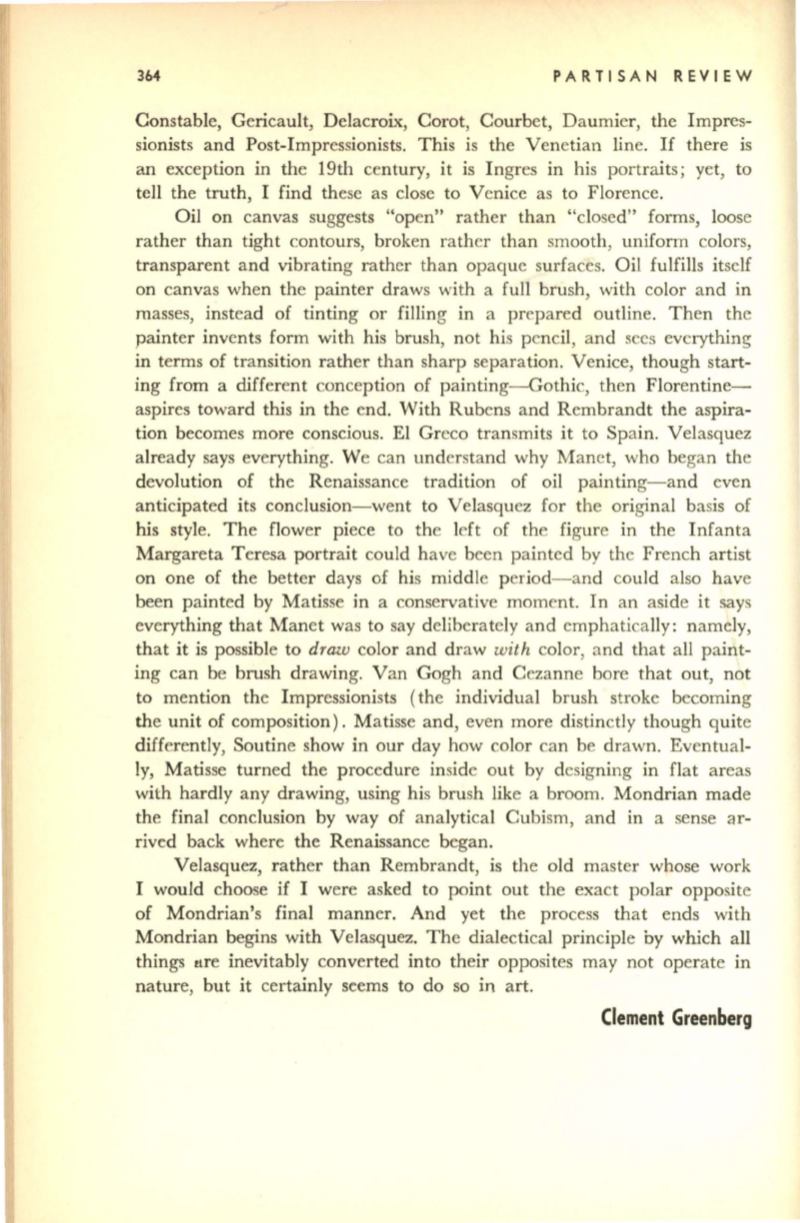
364
PARTISAN REVIEW
Constable, Gericault, Delacroix, Corot, Courbet, Daumier, the Impres–
sionists and Post-Impressionists. This is the Venetian line.
If
there is
an exception in the 19th century, it is Ingres in his portraits; yet, to
tell the truth, I find these as close to Venice as to Florence.
Oil on canvas suggests "open" rather than "closed" forms, loose
rather than tight contours, broken rather than smooth, uniform colors,
transparent and vibrating rather than opaque surfaces. Oil fulfilIs itself
on canvas when the painter draws with a full brush, with color and in
masses, instead of tinting or filling in a prepared outline. Then the
painter invents form with his brush, not his pencil, and sees everything
in terms of transition rather than sharp separation. Venice, though start–
ing from a different conception of painting- Gothic, then Florentine–
aspires toward this in the end. With Rubens and Rembrandt the aspira–
tion becomes more conscious. EI Greco transmits it to Spain. Velasquez
already says everything. We can understand why Manet, who began the
devolution of the Renaissance tradition of oil painting-and even
anticipated its conclusion-went to Velasquez for the original basis of
his style. The flower piece to the left of the figure in the Infanta
Margareta T eresa portrait could have been painted by the French artist
on one of the better days of his middle period-and could also have
been painted by Matisse in a conservative moment. In an aside it says
everything that Manet was to say deliberately and emphatically: namely,
that it is possible to
draw
color and draw
with
color, and that all paint–
ing can be brush drawing. Van Gogh and Cezanne bore that out, not
to mention the Impressionists (the individual brush stroke becoming
the unit of composition). Matisse and, even more distinctly though quite
differently, Soutine show in our day how color can be drawn. Eventual–
ly, Matisse turned the procedure inside out by designing in flat areas
with hardly any drawing, using his brush like a broom. Mondrian made
the final conclusion by way of analytical Cubism, and in a sense ar–
rived back where the Renaissance began.
Velasquez, rather than Rembrandt, is the old master whose work
I would choose if I were asked to point out the exact polar opposite
of Mondrian's final manner. And yet the process that ends with
Mondrian begins with Velasquez. The dialectical principle by which alI
things tlre inevitably converted into their opposites may not operate in
nature, but it certainly seems to do so in art.
Clement Greenberg


